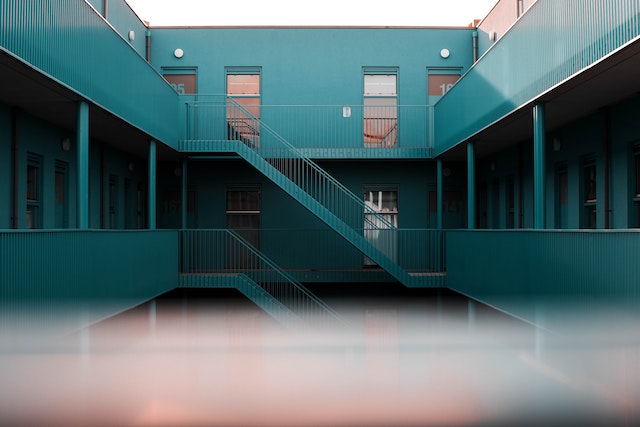When it comes to designing a rehab exercise venue, visual appeal is often not at the forefront of people’s minds. However, studies have shown that the visual appeal of a space can have a significant impact on motivation, engagement, and overall experience.
Together, let’s explore the power of visual appeal, the elements that contribute to it, and how it can affect the efficiency of a rehab exercise venue.
How Looks Matter
Firstly, let’s dive into the psychology behind visual appeal.
Humans are hard-wired to seek out beauty and are more likely to respond positively to visually appealing spaces. The psychology of visual appeal is rooted in the basic human need for a sense of well-being and positive emotions. When we are surrounded by aesthetically pleasing environments, our moods and behaviour tend to improve.
In the context of a rehab exercise venue, a visually appealing environment can have a significant impact on patient motivation and engagement. Patients who are recovering from an injury or illness may be feeling discouraged or demotivated. And a visually appealing space can help create a positive and uplifting atmosphere that can boost patient morale and encourage them to participate more actively in their rehabilitation exercises.
Visual appeal can also create a sense of ownership and pride among patients. When patients are proud of their surroundings, they are more likely to take ownership of their rehabilitation and take responsibility for their recovery. It can also help create a sense of community and belonging among patients. A rehab exercise venue can provide a reinvigorating and welcoming environment that fosters social interaction, promotes healthy relationships, and creates a sense of belonging among patients if it is visually appealing.
Through The Eye of the Beholder
So then, what are the elements that contribute to visual appeal? The first element is lighting. Proper lighting can make a space feel brighter, more open, and more welcoming. It’s important to consider natural lighting as well as artificial lighting when designing a rehab exercise venue. A combination of both can create a balanced and inviting space.
Another element to consider is colour. Colour can have a significant impact on mood and emotion. Warm colours like red and orange can create a feeling of energy and excitement, while cooler colours like blue and green can create a feeling of calmness and relaxation. When designing a rehab exercise venue, it’s important to choose colours that promote the desired atmosphere.
Layout and design are also crucial elements in creating a visually appealing rehab exercise venue. A well-designed layout can maximise the use of space and make it feel more open and inviting. It’s important to consider the flow of traffic and ensure that equipment is arranged in a way that is both functional and visually pleasing.
Lastly, the equipment and furniture used in a rehab exercise venue can also contribute to its visual appeal. Choosing equipment and furniture that is comfortable, stylish, and functional can create a welcoming environment in that patients will enjoy spending time.
Sweating the Small Stuff
Now that the basics of visual appeal have been discussed, next is putting the physical aspects together. First and foremost, it’s important to choose the right colours and lighting. This may require the help of a commercial painting contractor or lighting specialist. The goal is to create a space that feels bright, open, and welcoming.
When it comes to layout and design, it’s important to consider the flow of traffic and the placement of equipment. A well-designed layout can maximize the use of space and create a more functional and visually appealing environment. It may be helpful to work with an interior designer or architect to ensure that the space is both functional and aesthetically pleasing.
Selecting equipment and furniture that is both comfortable and stylish is also crucial in creating a visually appealing rehab exercise venue. This may require some research to find the right pieces that meet the needs of patients while also contributing to the overall visual appeal of the space.
No Pain, More Gain
But can it increase the efficiency of a rehab exercise overall?
As mentioned earlier, a visually appealing space can improve patient motivation and engagement. When patients are motivated and engaged, they are more likely to stick to their exercise routines and make progress towards their goals. Additionally, a visually appealing space can improve staff morale and productivity. When staff members are happy with their environment, they are more likely to be productive and provide better care to patients.
Breaking Down Barriers
Addressing accessibility needs is also important when designing a rehab exercise venue with visual appeal in mind. The design should promote accessibility for all patients, including those with mobility, sensory, or cognitive impairments. This may require some additional planning and design considerations to ensure that the space is inclusive and accessible to all. For example, selecting equipment that is adjustable or can be easily modified to accommodate different needs can help promote inclusivity.
Working with a commercial painting contractor can be particularly helpful in addressing accessibility needs. They can recommend painting colours and finishes that are visually appealing while also meeting the needs of patients with different types of visual impairments. For example, high-contrast colour schemes can be helpful for patients with low vision or colour blindness.
Designing for Balance and Success
While visual appeal is important, it’s also important to balance it with the clinical needs of a rehab exercise venue. The equipment and furniture used in the space should meet clinical requirements while also being aesthetically pleasing. This can be a challenging balance to strike, but working with an experienced designer or architect can help ensure that the space meets both clinical and visual requirements.





























